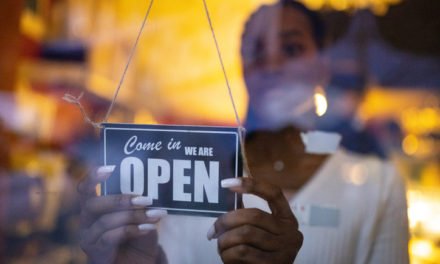The majority of organizations in the U.S. are still hierarchical in their structures. Generally speaking, org charts are most often some nominal variation on this: executives are positioned above upper management, which in turn stands above middle management, which then oversees the general staff population. There may be more levels, or different terminology, or perhaps even a nice-looking horizontal layout, but at its core, this is the structure that has become the operating paradigm in staffing.
There are plenty of benefits of utilizing such a structure, and it can be highly effective in producing an organization’s desired outcomes, whatever they may be. The old adage too often remains true, though: “Bad news doesn’t travel up.” More to the point: bad news doesn’t travel up if no one feels safe sharing bad news. Furthermore, good ideas die a quick death right along with the bad news.
The traditional workplace hierarchy often suppresses growth and change by suppressing bad news and good ideas due to employees not feeling psychologically safe. It doesn’t have to be so. Click To TweetPut another way, the traditional workplace hierarchy often suppresses growth and change by suppressing bad news and good ideas due to employees not feeling psychologically safe. “Often” is the operative word there, for it doesn’t have to be so. Over the past 50 years, reams of research have been published around the idea of psychological safety, which is an aspect of organizational culture that cultivates openness, engagement and positive change. It is the feeling among employees that they will not be punished for speaking up. As David Altman from the Center for Creative Leadership puts it:
People need to feel comfortable speaking up, asking naive questions and disagreeing with the status quo in order to create ideas that make a real difference…. It doesn’t mean that everybody is nice all the time. It means that you embrace the conflict and you speak up, knowing that your team has your back, and you have their backs.
While most of the literature in this area has focused on team dynamics and organizational hierarchy in general — as well as the business case for psychological safety — the current zeitgeist requires that we refine it even further with an eye toward justice: A just organization ensures that Black and POC employees are psychologically safe.
It takes a concerted effort on the part of team and company leaders to create a psychologically safe working environment, especially for Black and POC employees. Not only do leaders have to be willing to receive open, honest feedback and to not be threatened by ideas from those lower in the hierarchy — especially employees of color — they also have to cultivate a culture where everyone feels safe sharing.
It takes a concerted effort on the part of team and company leaders to create a psychologically safe working environment, especially for Black and POC employees. Click To TweetIt’s a necessary distinction.
In our design process with clients, it’s incredibly common for leaders of organizations to overestimate the extent to which their Black and POC employees feel safe. This, in turn, leads to frustration when employees express concern over their lack of autonomy, power or job security; their fear of speaking truth to power; and the oppressive, or outright racist, policies that oppress them.
To put a finer point on it: it’s not enough to say employees can speak freely, or even to make it so. Employees must truly feel it. Regardless of mission and vision statements, press releases or public commitments, it is employees’ lived experiences that are an organization’s true reality. The rest is just wallpaper.
It’s not enough to say employees can speak freely, or even to make it so. Employees must truly feel it. It's employees’ lived experiences that are an organization’s true reality. Click To TweetUnderstanding that feelings of safety stem largely from feelings of trust, which is built up and maintained over time, we can at least begin to create psychologically safe workplaces by adopting a few norms.
Model Authenticity and Vulnerability
If leaders are unable or unwilling to be vulnerable with their teams, then their teams will respond in kind. On the other hand, a leader who admits mistakes, speaks openly about their fears, and understands and shares their limitations can, through modeling, instill the same openness in their employees. From a racial justice perspective, this may look like a white leader acknowledging their white privilege, or openly questioning whether company practices uphold white supremacy. This stands in direct contrast to, say, holding a listening session with Black employees with no prior discussion or acknowledgement of systemic and/or organizational racism.
A just leader is a vulnerable leader. Choose Curiosity Over Judgment and Defensiveness
A just leader is a vulnerable leader. Click To TweetWhen an employee speaks up with criticism, it can be easy to respond in defensiveness, or to project blame back onto the employee. Leaders can opt to walk another path, though. When faced with criticism, choose curiosity: validate their feelings (again, their lived experience is reality); probe for more details; ask for suggestions and recommendations; use equity-centered processes to rebuild policies, procedures and structures.
How leaders actually react to feedback and new ideas does far more to establish — or undermine — psychological safety than any amount of “my door is always open” statements and 360-degree feedback processes can ever hope to accomplish.
How leaders actually react to feedback and new ideas does far more to establish, or undermine, psychological safety than any amount of 'my door is always open' statements and 360-degree feedback processes can ever hope to… Click To TweetCenter the Experiences of Those Most Impacted
Systemic racism exists. White supremacy exists. People can and do argue with this, but those arguments are rarely, if ever, in good faith — and they are always wrong. Recognizing this truth is the first crucial step in centering the experiences of Black and POC employees. Interrogating organizational systems through the lens of employees who are most impacted by racism and white supremacy can surface heretofore unseen aspects of organizational culture that uphold those systems. Doing so openly — through such strategies as equity-centered design, utilization of outside consultants, and long-term, in-depth learning experiences — will show employees that questioning the status quo is not only okay, but actively encouraged, which begets psychological safety.
Recognize the Limitations of Your Own Lens
A leaders’ experience is inherently different than that of lower-level employees. Even in an organization that exemplifies equity and openness, the CEO will necessarily have a vastly different experience than the newest intro-level hire. This dichotomy is part and parcel with traditional org chart structures, and leaders who recognize and evaluate this disparity of experience will find it much easier to receive critical feedback and adopt new ideas. Put another way, leaders often see in 2D, limited by their own perceptions and experiences. When you recognize this limitation and, to torture the metaphor a bit more, put on a pair of 3D glasses (even the old red and blue paper ones) your employees’ reality will pop into stark relief. It is much easier to lay a solid foundation for psychological safety when leaders understand and internalize that they have a limited view of reality — that their experience is not their employees’ experience.
It is much easier to lay a solid foundation for psychological safety when leaders understand and internalize that they have a limited view of reality—that their experience is not their employees’ experience. Click To TweetLeaders that use these as operating norms are actively showing a true commitment to justice. And a clear commitment to justice is the most effective way to lay a foundation for employees’ psychological safety — far more so than virtue signaling and performative wokeness.




















